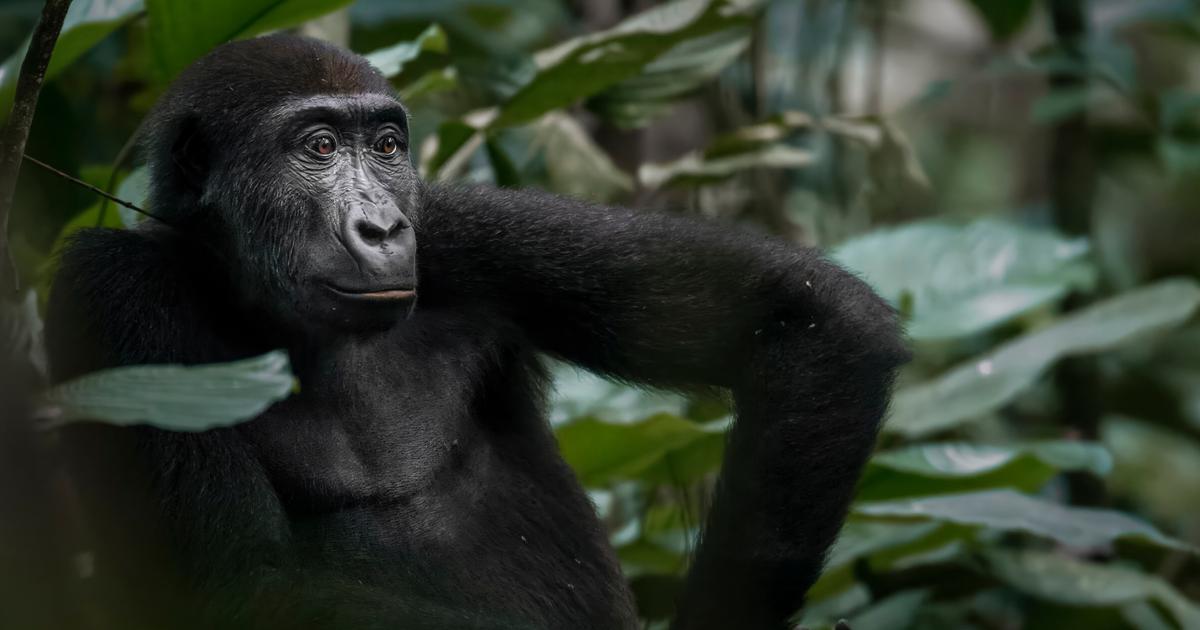It is commonly called the "
second green lung
" of the planet.
For its surface, first.
The Congo Basin forest spans six countries in Central Africa (Equatorial Guinea, Cameroon, Gabon, Congo, Democratic Republic of Congo, Central African Republic).
The massif extends over more than 240 million hectares, making it the second largest tropical rainforest in the world, just after the Amazon.
But this second green lung is above all one of the Earth's main carbon sinks and therefore plays a crucial role in regulating the climate.
While forests in Southeast Asia now emit more CO2 than they absorb due to deforestation, and in South America the Amazon rainforest has reached a tipping point, forests in Central Africa absorb a colossal amount of carbon and store the equivalent of six years of global greenhouse gas emissions.
On a global scale, this phenomenon, known as the "
sequestration
" of carbon dioxide by tropical forests, is under threat, as scientists have constantly emphasized in recent years, who have demonstrated a peak in carbon absorption reached in the 1990s, before declining seriously.
Read alsoMore than a third of the already very degraded Amazonian forest
And if the Congo Basin forest has remained outside this negative trend for a long time, it is now threatened.
"
Deforestation in this region accelerated from the early 2010s. Today, the DRC loses a million hectares of forest cover each year, just after Brazil", notes
Alain Karsenty, economist of forests and Central Africa specialist.
And in South America or Indonesia, trees have been massively razed for livestock farming or soybean crops, among other things, the Central African rainforest faces other problems.
wild farming
Agricultural expansion, mining, infrastructure development, logging... There are many drivers of deforestation.
But the main reason, which involves the others, remains the demographic pressure which has been increasing considerably for several years.
With its 105 million inhabitants, the DRC is now the fourth most populous country in Africa.
This uncontrolled agriculture is directly responsible for more than 90% of deforestation.
And the phenomenon would have accelerated by a rural exodus “
linked to job losses due to the pandemic and the increase in the prices of basic products, in particular cocoa and oil palm
”, advances the Global Forrest Watch.
“
The density of the rural population directly leads to the development of small-scale agriculture, a direct driver of deforestation
, explains Alain Karsenty.
For several centuries, itinerant or rotating agriculture allowed the population to let a piece of land rest for several years to go and clear another plot of land and cultivate elsewhere
”.
Today, the increase in population reduces fallow times and the forest no longer regenerates: "
Added to this is a land problem because many people appropriate land by deforesting simply to plant crops, such as palm trees. oil
”.
Logging
Paradoxically, on the other hand, the exploitation of wood as a resource rather allows, when the cutting standards are respected (one to three trees per hectare), to preserve the forest.
"
If logging is legal, well supervised, it's a good way to limit the temptation to convert forest areas to agriculture
," explains Alain Karsenty.
In Gabon, 85% covered by forest, the government has strictly supervised logging and fought against illegal logging.
The state has also opened 13 national parks, covering 11% of its territory.
The country has been working for several years to build an image of a model student in terms of forest protection.
As a result, the Gabonese forest remained 99% intact, according to observers.
It should be remembered that the country can rely, unlike its neighbours, on a small population (2.3 million inhabitants), mainly urban.
"
There is a large empty space, and almost no peasantry unlike the DRC or Cameroon
," reports Alain Karsenty.
Read alsoAfter black gold, Gabon values its green gold
“
Gabon's forests already capture 140 million tonnes of gross CO2 per year, up 19 million tonnes over ten years.
Our net capture already represents a third of France's annual CO2 emissions
”, boasted the Gabonese Minister of the Environment, Lee White, last August.
It is also in Libreville that Emmanuel Macron travels on Wednesday March 1 for the One Forest Summit.
The fight against deforestation represents "
20% of the solution to
climate change",
also declared Lee White in the columns of
Figaro.














